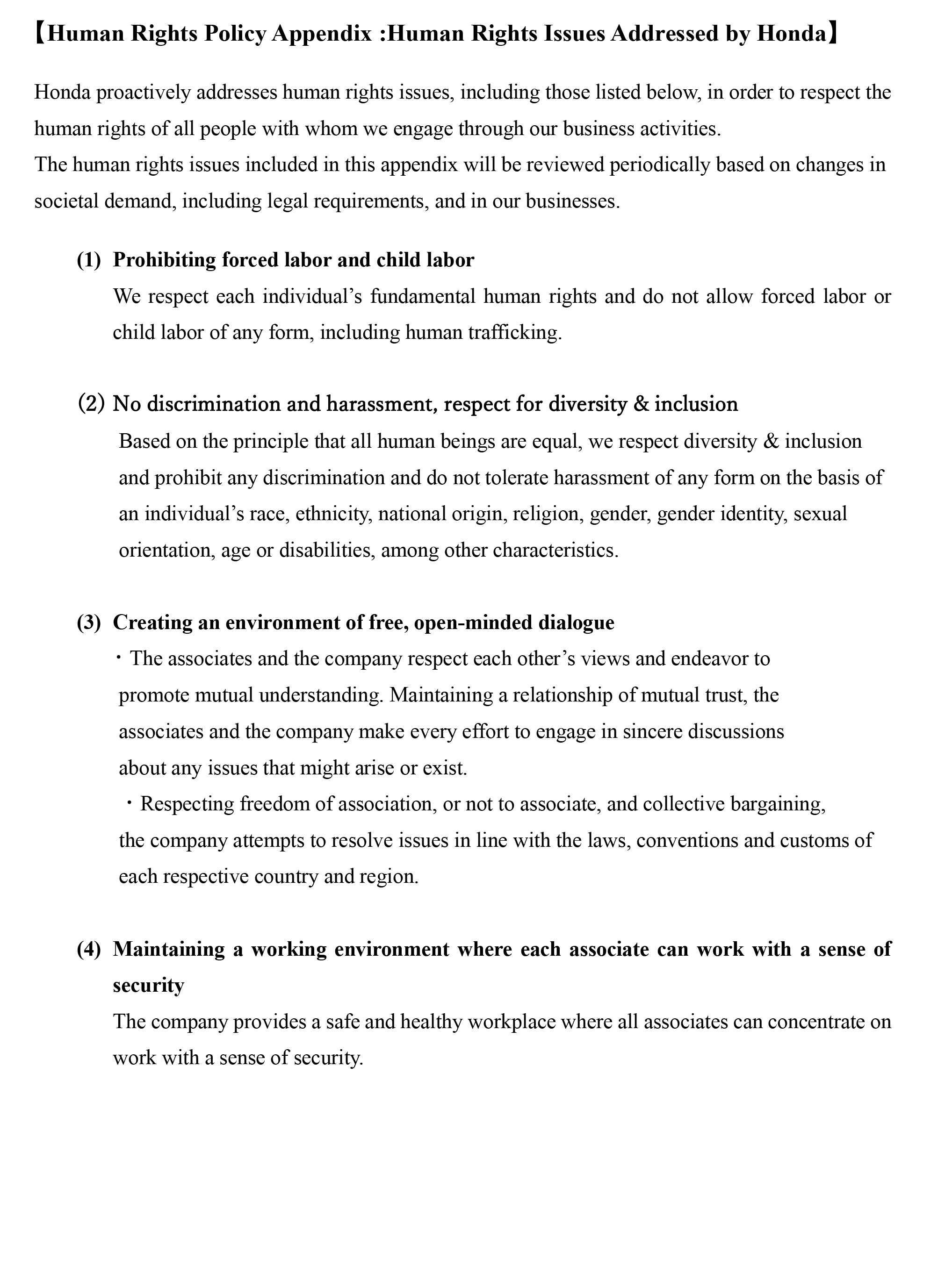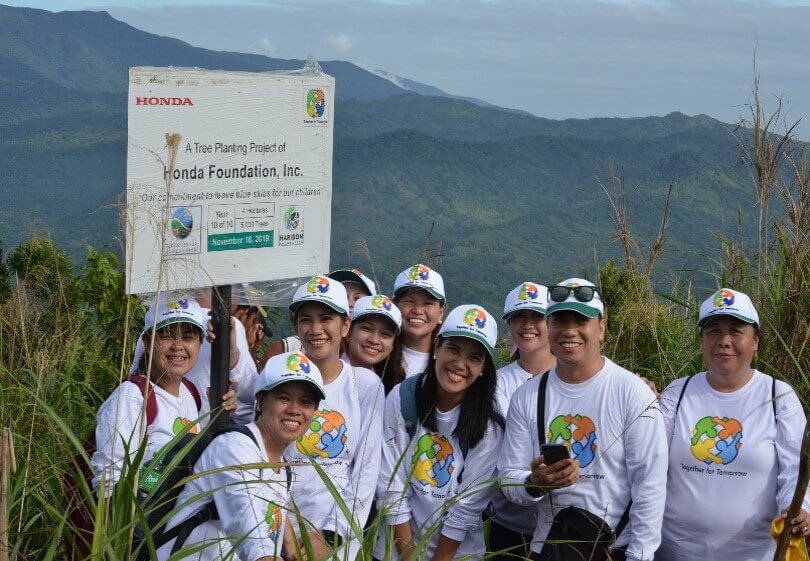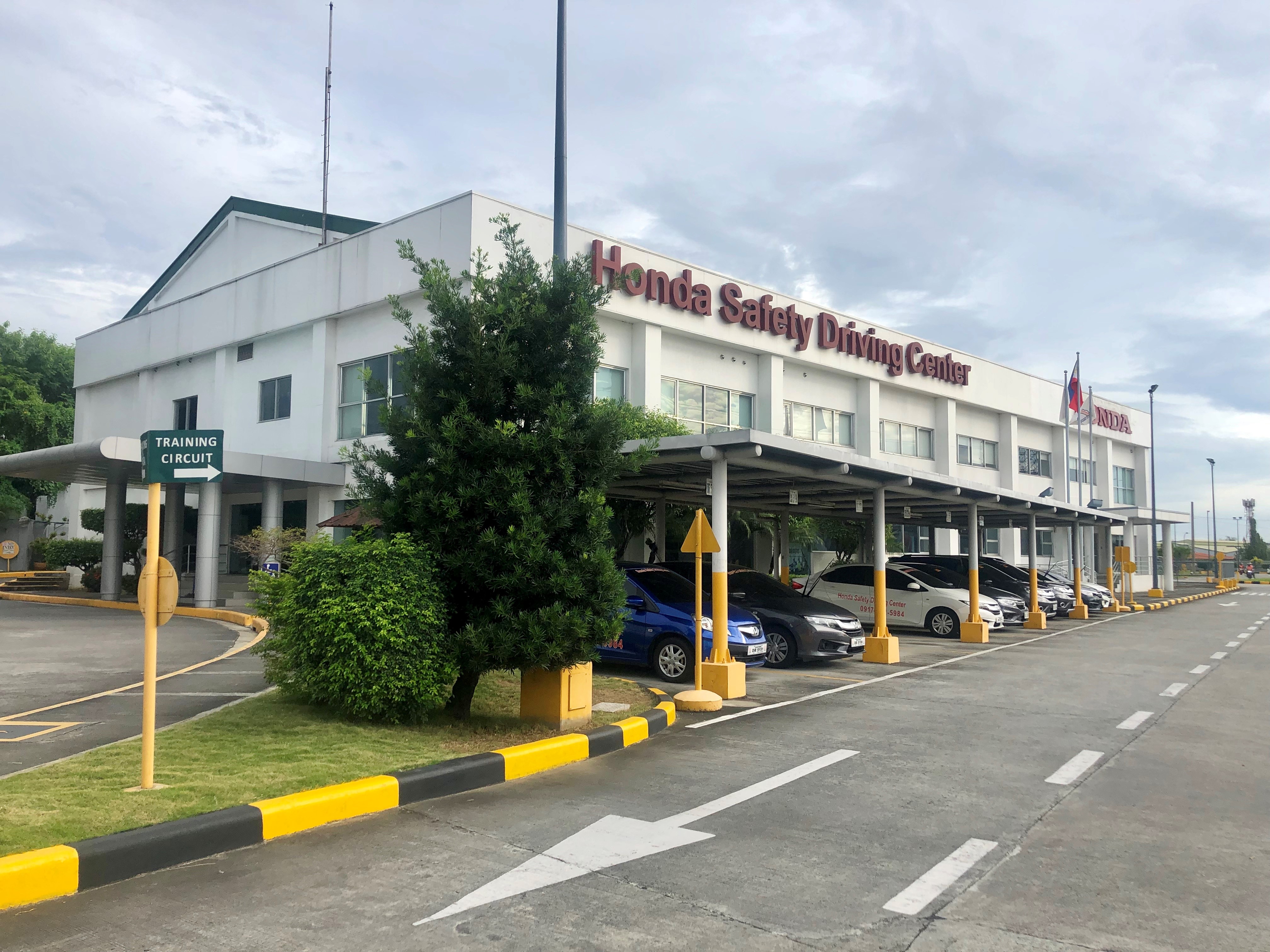This site uses cookies to give you the best experience.

We at Honda dream of a better world where people, technology and the environment live as one. That is why our products and processes are designed to put safe, efficient, economical, and environment-friendly technology at the service of people and the community. At our Batangas plant, once also just a dream that is now a 20-hectare reality, we push ahead with our efforts to provide our customers with life-building technology. This way, our dreams tie in with theirs, and together we readily face the future, because at Honda, we continue to witness the power of dreams.
Honda is known for its innovative spirit, high technological standards and passion for excellence.
Every Honda product that leaves the assembly line, leaves with years of technological expertise, constant research and development, plus meticulous attention to quality control and customer satisfaction built into it.
Honda keeps the Philippines moving in more ways than one.Whether on wheels, on electric power, on land or sea, the company's commitment to quality and customer service remains unchanged.




Corporate Social
Underlying the Honda Company Principle are our two fundamental beliefs, the three joys (Joy of Buying, Joy of Selling and the Joy of Creating) and Respect for the Individual. The belief of respect for the individual is applied to Honda’s relationship with fellow associates and with the people, companies and communities with whom it conducts business. Thus, Honda believes that as a “member of society, we must be sensitive to the needs of the communities in which we do business and the environment.” With this in mind, the Honda Foundation was created. To strengthen Honda’s Corporate Social Responsibility (CSR), the purpose for which the Foundation was created was amended to include projects in any of the following fields: Environment Protection & Safety, Youth Development & Education, Job creation and Poverty Alleviation (Philanthropy)

Safety
Honda Philippines, Inc. values the safety of its customers. Beyond just manufacturing top quality motorcycles, Honda wishes to impart the skill and responsibility involved in using them. Through the Honda Safety Driving Center (HSDC), the company aims to help safeguard the well-being of motorcycle riders. It is the first motorcycle riding school in the country, and is accredited by the Land Transportation Office. The HSDC offers comprehensive training on the basics of intelligent, safe and responsible motorcycle riding, and on the basics of motorcycle maintenance. A concise yet comprehensive instruction on these aspects of motorcycle usage is made available to owners of new Honda motorcycles through the S.M.A.R.T. Start program.

Environment
Honda Philippines, Inc. is concerned about the environment. Its manufacturing processes, which employ facilities and systems for waste water treatment, maintaining air cleanliness, energy conservation and solid waste management, are designed to make optimal use of resources while minimizing environmental impact. Our motorcycles in the Philippines have passed Euro 3, a world standard for measuring the cleanliness of vehicular emissions. The Euro 3 standard is a more stringent standard than the one used in the country. Because of this, locally manufactured Honda motorcycles are compliant with the Philippine Clean Air Act Regulation.

Technology
Honda Philippines, Inc. adheres to high technological standards. Technological expertise, continuous research and development and meticulous quality control honed through years of experience are applied for customer satisfaction. The results are machines that are efficient, economical and environment-friendly, that deliver good value at reasonable prices. These are all part of the company’s dream of improving the quality of human life through technology.
COMPANY MILESTONE
Mariwasa-Distributors, Inc. was established.
A joint venture agreement between Honda Motor Co., Ltd. of Japan and Mariwasa-Distributors, Inc. was signed in May, thereby establishing Mariwasa-Honda, Inc.
The TM110 model was introduced. The model was aimed at the tricycle market and was an improved version of the S110.
The Honda C50 was phased out and replaced by the C70. The XL100K3 and the XL125K3, two on and off road motorcycles, were manufactured.
The sporty XL125Z and the powerful TM125 were launched.
The XL185SZ, CD70 and TM110S were introduced.
The Honda Riding Academy, the Philippines’ first and only motorcycle riding school, was established.
The first XL100SD was produced.The TMX155, specially designed for the Philippine market and intended for heavy-duty tricycle use, was introduced.
The Biomass Seminar was held at the Manila Peninsula Hotel.
The company’s name was changed from Mariwasa-Honda to Honda-Philippines, Inc. (HPI) in December.
HPI sent a team for the first time to the World Convention in Japan and the NH Circle activities began.
The C70DD Econopower was launched.HPI reached a milestone with a cumulative production output of 100,000 units.
The TM110SR was introduced to strengthen HPI’s grip on the solo rider market.
No. 1 status was achieved in the country by Honda General Purpose engines.
Honda’s market share becomes No.1 for brand new motorcycles. Free service check-up for all owners of motorcycles and power products was provided with the launching of Handog Pasasalamat.
The TMS Super 110 was introduced, and the Best Brand carabao tiller was launched.
HPI introduced the PF50 (Trendy). Long tail shaft assembly for bancas was also launched.
HPI began exporting luggage carrier and wire harness for cars (Civic/Accord) to Japan. This was made possible through tie-ups with Honda Motor Co., Ltd.’s Japanese suppliers.
HPI attained the highest annual production volume. Export of CBU motorcycles from the Philippines is made with the export of the PF50 (Trendy) motorcycles to Latin America and South America. Suppliers’ Conference started.
HPI began local assembly of Honda stationary engines.The local assembly of TM/TMX engines started.To facilitate the export of motorcycle stands to Japan, a tie-up with a Japanese supplier was made.The export of motorcycle wire harness and control switches to Japan commenced.
Mr. Nobuhiko Kawamoto, President and Chief Executive Officer of Honda Motor Co., Ltd. visited HPI. HPI introduced assembled Gen Set models HPG2200/3300/5500.
The new GX340 marine model was launched. Fork Bottom Bridge for scooters and CG models were exported to Japan. HPI celebrated its 20th Anniversary.
The new GX340 marine model was launched. Fork Bottom Bridge for scooters and CG models were exported to Japan. HPI celebrated its 20th Anniversary.
The Board leadership was turned over to Amb. Benjamin Sanvictores by Amb. Jose S. Laurel, III.Directors’ Meeting of Honda Motor Co., Ltd. was co-hosted by HPI.
The Power Products Dealers Convention featured the launch of the GXMega Agri. C100 Dream was launched.
Groundbreaking opening of the Cebu and Davao depots was held. Honda became No. 1 in the motorcycle industry. The UMK431, a Micro 4-cycle engine brushcutter and the new XLR200 motorcycle were launched.
HPI’s Authorized Capital Stock was increased from P192M to P700M, with paid-up capital of P641.6M
The Wave 110 motorcycle was launched.
The GL 125C and GL 125HA motorcycles were introduced. HPI captured the no. 1 position in the motorcycle industry.
HPI maintained the No. 1 slot in he industry. The ANF 125 and NF 100 motorcycles were introduced. The XRM Dual Sports was launched in January. New EP Generators were introduced.
The TMX 125 was launched in January. The company celebrated 30 years of progressive partnership with the Filipino people.
The XRM 110 has reached its 100,000 unit sales as of September 30 from the date it was introduced in January 2002.Held the re-launch of the following motorcycle models (supported with AHO safety feature): the Wave 125S; XRM 110; XR200.
Introduction of the Automatic Headlight On (AHO) safety feature.HPI reached its highest sales record of 21,000 units for the month of July.
Honda reached its 1 millionth motorcycle production on February 10, 2005.
Groundbreaking Ceremony at Batangas Plant was held on February 28, 2005.
Soft Blessing of the New Plant on April 17, 2006.The UMK435T, Micro 4-cycle 35cc engine brush cutter was launched.
Launching of the XRM 125 (May 27, 2007.)
Honda Philippines, Inc. reached its 2 Millionth Production of motorcycles (April 8, 2008.)
Launching of the XRM RS 125 – Road Sport (Nov 29, 2008.)
Launching of HPI’s first Scooter, the Honda BeAT (March 15, 2009.)
The Wave Dash 110 was launched (Nov 18, 2009.)
New color variants and sticker design for the BeAT Scooter were released.
Launching of the new sporty bike, the CB110 (Sept 18, 2010.)
HPI reached its 3 Millionth production of motorcycles (Feb 10, 2011.)
The CBR150R was launched.
Launching of the Scoopy, the 2nd scooter model of HPI (Sept 3, 2011.)
Brand ambassadors were introduced for the Honda Scoopy, Mr. Ramon “RJ” Jacinto & Ms. Patti Grandidge
The TMX Supremo was launched last October 2012.
We at Honda dream of a better world where people,technology and the environment live as one. that is why our products and processes are designed to put safe, efficient, economical, and environment-friendly technology at the service of people and the community. At our Batangas plant, once also just a dream that is now a 20-hectare reality, we push ahead with our efforts to provide our customers with life-building technology.
(02)-8581-6700 to 6799
© Copyright 2023 | Honda PH. All rights reserved.
